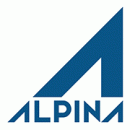
Railway line Turin Lyon – Avrieux ventilation shaft – (France)
ClientTELT - Tunnel Euralpin Lyon Turin
Work activitiesMaitre d'Oeuvre (MOE): Final Design (PRO), Preparation of Tender Documents (DCE), Review of Detailed Design (EXE) and Work Supervision
PlaceITALY & FRANCE
Depht500 m
Period2016 - 2017
Overview
As part of the project for the new Lyon – Turin high speed railway, this contract concerns the construction of the Avrieux shafts, a part of the safety site, a section of the base tunnel towards La Praz and the tunneling machinery chambers of the future section 05.
The main works concerning the shafts are broken down into two parts:
- Part 1 – Avrieux Shafts (n. 4 ventilation shafts);
- Part 2 – Tunnels at the bottom of shafts (connecting gallery, room at the bottom, ventilation tunnel, heads of the smoke shafts, smoke shaft at the intertube gallery). The basic solution involves the construction of four shafts of 4,26 m internal diameter and 5,20 m excavation diameter dug at Raise Boring aligned in pairs on two rows spaced by 2 diameters.
- The 4 shafts have a depth of about 500 m each, from the platform of Avrieux to reach the room at the bottom of the wells.
- The room at the bottom of the shaft is connected to the ventilation tunnel.
- The inter-distance of the shafts is 12,5 m with the exception of the two shafts at the entrance of the ventilation tunnel, which are arranged at 20 m distance to ensure the maneuvering area of the machines.
- The installation of the shafts must be compatible with the size of the opening of the ventilation plant at surface in order to directly open the 4 shafts in the future central platform. The constraint to be met includes the requirement to enclose the shafts in a rectangular area with footprint 28,0 mx 18,39 m.
- The excavation section of each of the four shafts is 21,24 m².
The construction method chosen consists of 4 main phases which are as follows:
- Dig a pilot hole from top to bottom in about 15 inches (RVDS directional drilling).
- Bore up to 5,20 m in diameter with the Raise-Boring method.
- Install a temporary support from top to bottom once the bore is finished.
- Final coating of the shaft from the bottom to the top with slippery or creeping formwork.
A jet-grouting soil consolidation treatment is necessary before RBM digging to ensure shafts wall stability.
The cuttings produced by boreholes fall at the base of the shaft in each sector of the basic chamber, divided into independent sectors by temporary partitions.
The construction of the concrete final lining is done by sliding or creeping formwork, from the bottom to the top. The presence of a seal between the coating and the solid structure significantly reduces the transmission of the weight of the coating to the rocks by friction. For this reason, in order to provide support to the coating, which would otherwise be suspended to the top of the shaft, 12 precast concrete hemispherical supports every 10m are anchored to the solid structure by HA32 bolts, 2 m long, inclined by 20°. The execution of the shafts is done in a soundproof acoustic shed able to limit the noise nuisances within the limits set in the NRE.


